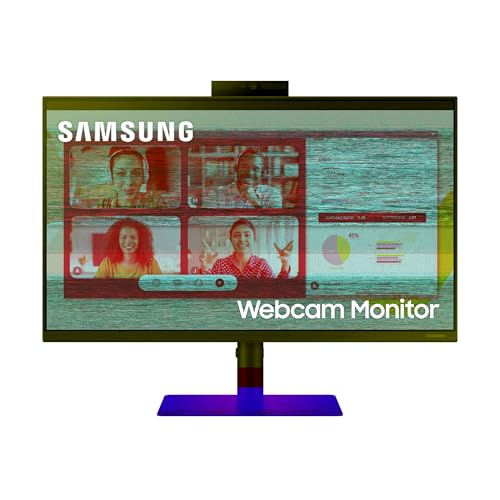Understanding 144Hz Refresh Rate: Why It Matters for Gaming
What is Refresh Rate?
The refresh rate, measured in hertz (Hz), indicates how many times per second a monitor updates the image on the screen. A 144Hz refresh rate means the screen refreshes 144 times each second. In practical terms, this results in smoother visuals and reduced motion blur when playing fast-paced games. Imagine you’re playing a racing game: with a standard 60Hz monitor, you might notice a bit of choppiness as cars speed by, but with a 144Hz refresh rate, everything feels fluid and responsive.
The Impact on Gaming Experience
A higher refresh rate significantly enhances your gaming experience. It makes aiming and reacting to opponents much easier, especially in competitive situations. If you’ve ever struggled to keep track of a quick-moving object on-screen, a 144Hz monitor helps solve that problem. You’ll notice a clearer and sharper image, which can be the difference between victory and defeat in fast-paced games.
Key Features to Look for in a 144Hz Gaming Monitor
Response Time
When shopping for a gaming monitor, response time is a critical feature to consider. This term reflects how quickly a pixel can change from one colour to another, measured in milliseconds (ms). A lower response time, typically 1ms to 3ms for gaming monitors, ensures that fast-moving images appear less blurry. For instance, if you’re playing an FPS game, a lower response time helps in getting a sharper image of your target.
Panel Type
Next, we should consider the panel type. The three main types are IPS, TN, and VA. IPS panels offer great viewing angles and colour reproduction but may have slower response times. TN panels usually have the fastest response times, perfect for competitive gaming, but have poorer colour accuracy. VA panels tend to offer better contrast ratios, meaning deeper blacks, but sometimes fall in response time. Depending on your priorities, choose the panel type that aligns with your gaming style.
Connectivity Options
Don’t overlook connectivity options either. A good gaming monitor will have multiple ports, including HDMI and DisplayPort. This compatibility ensures that you can connect various devices, like gaming consoles or PCs, without hassle. Additionally, check for USB ports to make connecting peripherals simpler.
How to Choose the Right Size and Resolution
Size Matters
When it comes to size, think about your gaming setup and how far you sit from the screen. Monitors usually range from 24 to 32 inches. If you’re positioned closer, a 24 to 27-inch screen is often ideal, while larger screens can be better suited for more distance. The larger monitors provide an immersive experience, drawing you into the game world.
Resolution Considerations
Resolution is another vital factor to consider. A 144Hz monitor might come in different resolutions: 1920×1080 (Full HD), 2560×1440 (Quad HD), or even 3840×2160 (4K). For most gamers, 1080p is a good start, but as hardware becomes more powerful, 1440p is increasingly popular for its enhanced detail without significantly sacrificing performance. 4K is stunning visually but requires a powerful graphics card to maintain high frame rates.
Benefits of Adaptive Sync Technology in Gaming
What is Adaptive Sync?
Adaptive Sync technology, which includes NVIDIA’s G-SYNC and AMD’s FreeSync, helps eliminate screen tearing. When your monitor’s refresh rate aligns seamlessly with your graphics card’s frame rate, the result is an incredibly smooth gaming experience. Imagine playing a game with lots of rapid movement and feeling that irritating stutter or tearing; with Adaptive Sync, those frustrations are a thing of the past.
Advantages for Competitive Gamers
For competitive gamers, Adaptive Sync can provide a significant edge. Being able to react faster with a smoother image can positively influence your gameplay. Therefore, when selecting a 144Hz monitor, look for one that supports Adaptive Sync technology; it really adds a layer of performance that enhances the overall feel and playability of your games.
Top Recommendations for 144Hz Gaming Monitors in 2023
Best Overall Experience
For best overall performance, consider a 27-inch 1440p monitor with an IPS panel and FreeSync support. It balances size, responsiveness, and colour accuracy perfectly. If you are playing a variety of games, from competitive shooters to graphically rich adventures, this choice can cater to all needs.
For Competitive Gaming
If your focus is purely competitive gaming, a 24-inch TN panel with a low response time and G-SYNC compatible features is ideal. This choice ensures minimal input lag, making your reactions seamless and precise.
Budget-Friendly Option
For those on a budget, look for a 24-inch Full HD monitor with a 144Hz refresh rate. These can provide a solid performance without straining your wallet, ensuring you can still enjoy smooth gameplay without compromising your finances.


























